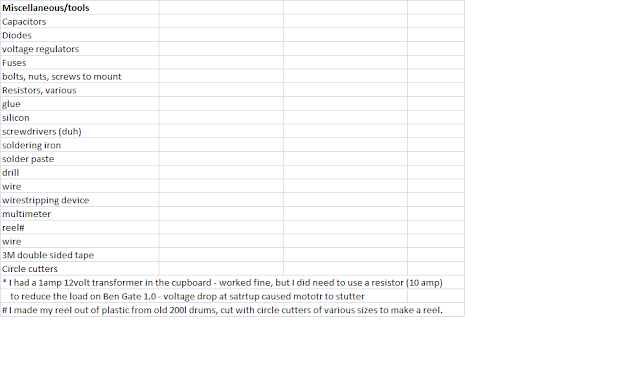I'm assuming here that you treat your own lame cows as a general rule. I'm assuming you've done some training at some point (eg learnt from other farmer, trimmer, vet, or a course eg with Karl Burgi) and you regularly use hoof blocks. I'm assuming then you also buy the supplies. There's of course a number of places to buy your supplies (in alphabetical order), eg Camden Cow Clogs, Genetics Australia, Innovative Farm Imports, Shoof and others.
Proper hoof trimming is a discussion of its own, and not covered here. Proper equipment for hoof trimming is also another discussion of its own, ranging from basic (Shoof vet rope and lifter tied to current crush), to dedicated crushes, such as WOPA and Comfort Chutes. For safety's sake (trimmer and cow), only people who know what they are doing should trim.
Glue is a whole discussion of it's own. As far as I can tell, Bovi-bond is one of the oldest glues/adhesives. I get 5 cows per tube (180ml), although being a bit more stingy could probably get me 6. Other products I've used - Easy Bond and Quick Block are similar in consistency, with similar style mixing tips. Camden cow clogs has a larger tube, with a thinner consistency, and its own mixing tip. To be honest you would need a randomised trial with a fairly large sample size to tell the difference in glue "staying power". Any else is probably just opinion or anecdotal.
Hoof Blocks is what I promised to talk about. I am a fan of wooden blocks. I think wood gives a more natural feel for the cow than rubber. Wooden blocks come in all sizes and patterns. I think scores help the glue staying power, and most blocks have this. I know there are various grades of wood, with varying density. The denser the better I say, and I'll go through this below in case you aren't convinced. This link gives a rough idea for Australian woods, where roughly speaking, density is correlated with increasing hardness, toughness and durability.
Below is a picture of a selection of blocks bought from various suppliers.
You can't assume that the darkest wood is the densest/hardest, although it is correlated. The weight is written on the side in grams. Of course that is not a good guide either, because the size and shape vary. Thanks to some experimental work attributed to some Greek bloke called Archimedes, I determined the volume of each block and then calculated the density (g/ml, or equivalently, kg/l). They varied from 0.76 to 1.21. Water's density is 1 (by definition, thanks metric system!) , so anything denser sinks (eg first picture), and less dense floats (eg second picture, me holding it down). Note, I also measured the blocks after submerging in water, and the denser blocks added less weight (about a gram) versus 5 or more grams for less dense blocks.
Why am I banging on about density and hardness? Let me show you some pictures of a block I took off a cow, to put a new one on. This had been attached to the cow, walking some decent distances, for 21 days. It was fairly worn as you can see. It had a density of 1, measured in its current state. Clearly a less dense block would have disentegrated by now.
Perhaps more importantly, look at the top surface (picture below). You can see dark areas where the glue was not adhering to the surface any more. I strongly suspect that less dense blocks lead to water soaking through the wood (as evidenced by post soaking weights), reducing the glue adherence, leading it to fall off earlier. When you consider the time and other material costs of treating a lame cow, you shouldn't skimp on the block, but demand from your supplier blocks that sink, and send back any blocks that float.











